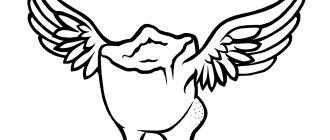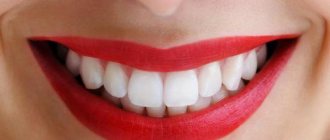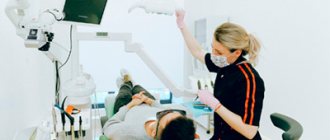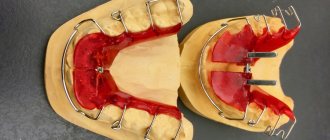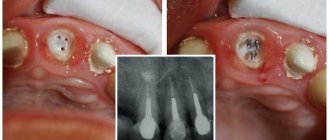Remember how often you wanted to smile, but had to deny yourself it? Crowding of teeth, their partial or complete absence - to solve these and other aesthetic problems, specialists often resort to the use of additional orthopedic and orthodontic devices, for example, a face bow.
Despite the same name, face bows are different devices in orthopedics and orthodontics.
An orthopedic facebow is a device with two functions. Firstly, it helps to determine the correct direction of movement of the lower jaw, and secondly, to record the patient’s individual anthropometric data necessary for creating orthopedic structures.
An orthodontic facebow is a design for correcting malocclusion, which is most often used in combination, for example, with braces or other orthodontic devices.
How is crooked teeth corrected?
Each bracket is attached with a special composite adhesive to the surface of the tooth. This is a very crucial moment responsible for achieving a positive result. The way your doctor attaches the brackets affects the tooth's ability to move in a given direction. The pressure of the arch product is transferred to the brackets, allowing you to “control” the teeth.
It may seem that an orthodontic archwire is a simple wire. But this is absolutely false. The design, depending on the profile, tension force and cross-section, is designed to solve certain problems.
The structures are attached to the root teeth, and the brackets are attached to them using ligatures.
How strongly the wire will press on the teeth is determined by its fastener diameter and cross-section. The purpose of each set of arc products is different. Therefore, the groove into which the fastening element is threaded must have a specific slot direction for each element.
How to prevent the development of caries during treatment with braces?
It is necessary to visit your dentist regularly. Brush your teeth at least twice a day with an electric or special brush for braces and a brush. Toothpastes contain a component that prevents soft deposits from sticking to the surface of the teeth. Its effect lasts for 10-12 hours, but the effect manifests itself exclusively on a clean tooth surface. After the teeth are brushed, you need to evaluate the result: the cleaned enamel surface has a dry shine. If you can see areas of enamel without shine, you need to brush your teeth again.
If you notice bright white areas of enamel or other suspicious lesions, consult a doctor immediately.
Orthodontic arch
The most important part of the bracket system is the orthodontic arch. It creates pressure on the teeth, pulling them in the desired direction.
Note: This design is made at the first stage of treatment for each client individually. In this case, the predicted result of the location of the teeth is taken into account.
The metal from which the leveling product is made is able to remember its original position. The structure is stretched on the teeth, and it tends to its original shape, so the dentition gradually straightens.
Leveling structures can be different, depending on their purpose, cross-sectional shape, material and the use of additional capabilities.
According to the cross-sectional shape, the structures are round, square and rectangular. Designs of rectangular and square cross-section are better secured in the groove of the plate, moving not only the tooth, but also its root.
Based on the place of attachment, there are designs for the upper and lower jaws.
Additional options for orthodontic arches are as follows:
- reversible elements;
- hinged elements.
The duration of treatment with braces is one and a half to two years. In order to gradually increase the load on the dentition, arch products are changed three times during this time. More frequent replacement is also possible, especially if the product breaks down.
How does the braces system work?
The braces themselves are not able to correct the position of the tooth. Bite correction is carried out by an arch that connects the teeth with braces and moves them to the required position. In order for the bracket system to successfully complete its work, it is necessary to periodically replace the arch with a more elastic one.
The bracket is glued to the tooth in the center of the crown. Each tooth has its own bracket. For example, if you do not glue the bracket that is intended for the canine onto the incisor, then the incisor will never become beautiful and even. This is because each brace has specific angles, which are different for each tooth. Now you can understand why the cost of bracket systems is so high, because they are not ordinary metal brackets, but metal brackets manufactured with maximum precision. If they are placed upside down or reversed, the braces will not work as well as they should. But in some cases, orthodontists specifically change the position of braces or their places. These are the subtleties of this or that non-standard clinical case, as well as the features of the creative work of an orthodontist.
How the archwire is attached to braces
Types of material
Arches for braces have different diameters and cross-sections. Let's consider their classification according to different criteria.
Types of arches, relative to the material used for their manufacture:
- high quality steel;
- titanium alloy with molybdenum;
- titanium alloy with nickel;
- an alloy of copper, nickel and titanium.
According to the cross-sectional shape, arcs with a round, square and rectangular cross-section are distinguished.
Types of structures relative to the mounting location:
- on the upper jaw;
- on the lower jaw.
Types of designs regarding additional capabilities:
- element with closing loops;
- reversible elements.
Use of a facebow in orthopedics
The use of a facebow in orthopedics minimizes all inaccuracies and errors in the manufacture of prostheses.
According to the principle of operation, the face arc is divided into types:
Standard (medium anatomical) - consists of a U-shaped metal plate, which is fixed on the head using an ear or nose pad, and a bite fork, which is attached to the teeth (base wax is applied to it for an impression). The standard type of arch is applied to edentulous jaws for the manufacture of removable dentures.
Kinematic - such an arch is fixed at the point of the chin and the middle of the forehead line, allows you to get very accurate results, copies the correct position of the axis when moving the jaw, and is used in the manufacture of partial elastic dentures.
For greater efficiency, an articulator is also used, which allows you to reproduce the natural movement of the lower jaw.
How the arc works
The metal alloy from which leveling structures are made remembers its shape.
So, they constantly strive for their original position, and being on the teeth, they move them along with them.
Therefore, the pressure on each tooth is transferred from the wire to the bracket, and from it to the tooth. And the more the tooth does not correspond to the shape that the arch is striving for, the more it puts pressure on it.
With gradual movement, the pressure on the tooth decreases. During treatment, some leveling devices are replaced by others, relying on the achieved result.
What you need to know when using a facebow
For high effectiveness of using the design, a patient who is prescribed a face bow should follow a number of recommendations. They consist of observing the following rules:
- Daily use of the device should not exceed ten hours.
- To eliminate pain and discomfort that may occur when moving teeth into the correct position, it is recommended to use painkillers,
- Before fixing the arch, it is necessary to carry out high-quality hygienic treatment of the structure and the oral cavity.
- The facebow should only be worn when at rest.
- During the period of use of the arc, the gums may become inflamed. In this case, to eliminate the causes of swelling and redness of the gums due to excessive pressure of the arc on the tissue, it is necessary to visit a dentist,
- If you use the arc while sleeping, you need to make sure that it is securely fastened.
Despite the bulkiness of the design, the face bow, when used correctly, is an effective orthodontic device.
Arc section shape
Types of arc products according to cross-sectional shape:
- Round (0.14, 0.16 or 0.18) - very elastic and not very hard, so they are used in the first stage of straightening.
- Rectangular (0.16 × 0.22 or 0.17 × 25) - they are used in the middle of treatment.
- Square (16x16 or 175x175) - used at the end of treatment.
Thus, during treatment, structures with a round cross-section are usually replaced first with rectangular ones and then with square ones. How and when to replace the arches depends on the specific case and is decided by the doctor.
Types of arches for braces, taking into account the metal used
Arc products for braces are divided into 3 main types.
Steel arcs
Arches made of steel (3M steel arch) are considered a classic option in orthodontics, which has been used since the first days of the existence of these structures, but to this day this type is actively used by orthodontists when installing braces. This type is characterized by low cost of material, sufficient rigidity and elasticity. Steel products are divided into several types:
- made from a single piece of wire;
- made using a braided method using 3–6 pieces of wire of a finer structure.
Braided arches are often used at the beginning of the treatment of malocclusion pathologies. They are considered a more affordable alternative to arches that are made from an alloy using nickel and titanium.
Arcs for braces made of titanium-molybdenum alloy
The product is designated as “TMA arch 3M” and is used in the middle of the entire period of bite correction. The material has greater rigidity, but at the same time greater elasticity, in comparison with its steel relatives.
This product is used in cases where it is necessary to create a lot of pressure on the teeth, but if you use a product made of steel, it will cause pain in the patient. Also, the product, made of molybdenum and titanium, perfectly replaces conventional arches, which makes it possible for the patient to visit the orthodontist less often.
This alloy has another important property – hypoallergenicity. Many products that contain nickel cause allergic reactions in patients. Arcs made of titanium and molybdenum eliminate such manifestations.
Alloy of titanium and nickel for making archwires for braces
These products are marked Ni-Ti 3M. They began to be produced only 20 years ago, but have already achieved great success in orthodontics due to their elastic qualities. Ideal for treating malocclusions for the first months of treatment or for minor deviations.
They are divided into several varieties. The most popular are thermoactive or temperature-dependent products. Their peculiarity is that the influence of normal temperature allows the product to be given the shape required for installation, and once installed, the product remembers its task assigned during manufacture and activates work at full strength.
These features make it possible to significantly reduce the number of arches used during the period of bite correction. The success lies in the fact that you can immediately install an arc with a rectangular cross-section, bypassing the round one. This means that the patient will be less likely to contact the attending physician due to arch replacement.
The disadvantage of this type of product is the need to control the temperature in the oral cavity. Sudden changes in temperature can lead to changes in the basic properties of the product, which will cause the entire brace system to malfunction. As a result, instead of straightening the teeth, the patient may experience even greater complications in the bite.
A significant disadvantage of threaded arcs is their fragility. During the treatment period, the patient will have to reconsider his diet in order to exclude solid foods from it. Also, when choosing, it is worth considering the high cost of this material. Compared to steel analogues, such a product will cost three times more.
Arch replacement
Typically, during the entire process of correcting the bite, 3 pairs of arches for braces are replaced. For complex defects, when the duration of treatment increases, the number of replacements should also be increased. Each subsequent pair of arch products differs from the previous one in greater rigidity in order to gradually increase the load on the teeth.
How many times it is necessary to change, and what designs, the orthodontist decides, relying on the characteristics of a particular case. There are situations when a patient asks to replace the arch unscheduled. Indeed, if improperly maintained or as a result of injury, the structure may break. Then the unsuitable wire on the upper or lower jaw is replaced. During a planned replacement, both structures are replaced.
Replacing the arches is easy and fairly quick. By opening the clasps of the braces or removing the ligatures, the specialist removes the old wire from the grooves, then installs and fixes a new one. The patient does not feel any discomfort.
Recommendations of orthodontists Aza&Buka
High-quality orthodontic treatment with braces requires a responsible approach from patients:
- You cannot skip scheduled appointments. Otherwise, the effectiveness of treatment decreases and the length of correction time increases.
- It is unacceptable to independently replace the wire in metal or other braces. Despite its apparent simplicity, the procedure requires accuracy and precise medical calculations.
- Correct selection of products during the treatment period. You need to avoid solid foods that can deform or break the elements of the braces system.
Most common problems
There are different cases when wearing braces. The arch may break off as a result of improper use of the structure or the use of the wrong material for its manufacture, fly out of the last bracket, and so on. What to do in this case? Let's look at each situation in more detail:
- The last lock of the bracket does not fix the arch very firmly, for this reason the structure may fall out of it. But this is no reason to worry. There is no need to change the design. And the patient can reattach it independently. Standing in front of the mirror and using tweezers, you can carefully insert the end of the wire into the hole in the lock. Try to be as precise as possible.
- It is also possible for the arch to bulge and cause injury to the soft tissues of the oral cavity. The case is unpleasant, and to solve it you need the help of an orthodontist. He will either replace the structure or simply trim the ends of the wire.
- If a wire falls out of a lock that is not the last one, you also need to contact a specialist. And as early as possible. After all, this is how the arc changes its position and can ruin the entire treatment process.
- If the arc breaks, it can only be replaced. Again, only an orthodontist can do this. Before visiting him, you can protect the soft tissues of the oral cavity by treating the protruding edge of the wire with wax.
Advantages and disadvantages
The facebow in orthodontics is an effective tool in eliminating many anomalies in the development of occlusion.
The indisputable advantages of the face bow are:
- Relatively short treatment period (up to 6 months).
- Low cost due to the simplicity of the device and materials used.
- The ability to use the device at night without causing psychological discomfort (the design cannot be seen by strangers).
- High efficiency of the device, even in the most severe cases.
The disadvantages include the bulkiness of the design and fragile fixation, as a result of which the fastening element can jump off the support rings and injure the mucous membrane.

